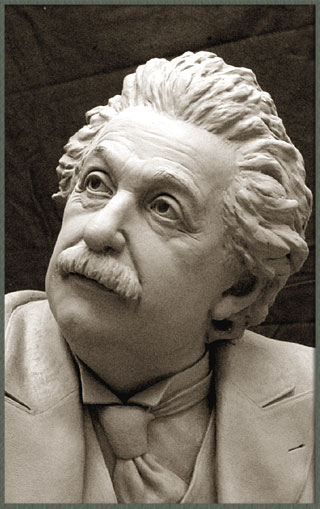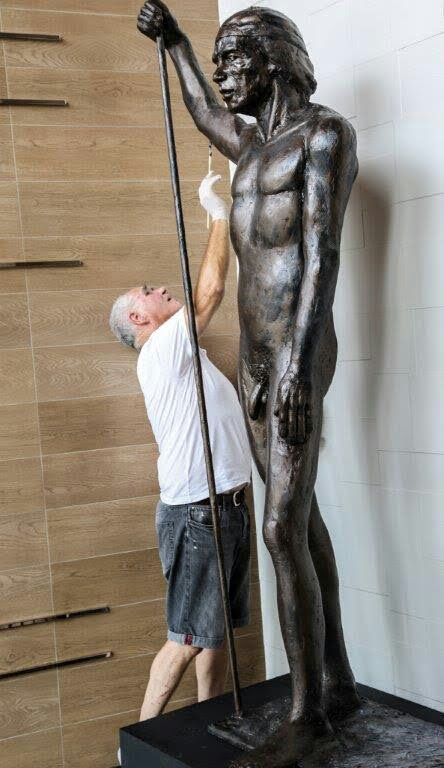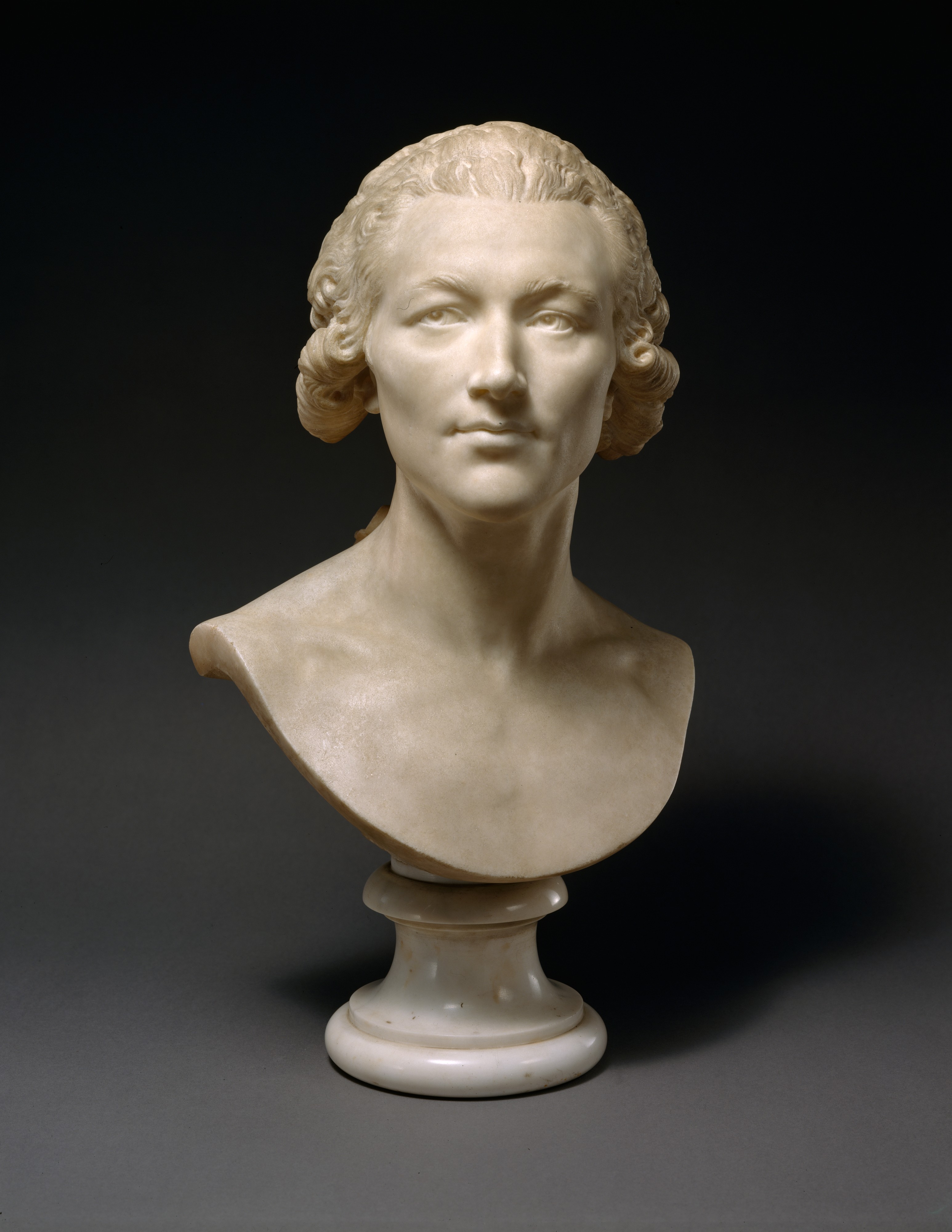Contemporary Marvels: Dive into the Globe of Contemporary Sculptures
Wiki Article
The Impact of Nature in Sculpture Art
The impact of nature in sculpture art is a subject that has mesmerized artists throughout background. From old people to modern artists, the environment has served as a profound source of ideas. This impact appears in the natural kinds and shapes that are commonly discovered in sculpture, mimicking the contours and shapes of nature. Artists likewise discover structure and materials in their job, looking for to recreate the responsive top qualities of the environment. Meaning of natural components is another method which nature affects sculpture, as musicians imbue their developments with the meaning and associations integral in these elements. The atmosphere itself, with its landscapes, flora, and animals, is commonly reflected in sculptures, providing a connection to the world around us. Ultimately, sculpture art has the power to capture the transience of nature, cold a moment in time and enabling us to appreciate its elegance in perpetuity.Organic Types and Shapes
Organic forms and forms, motivated by the intricate patterns and unified frameworks discovered in nature, play a critical duty in the realm of sculpture art. Artists have actually long been captivated by the appeal and complexity of the environment, finding inspiration in the graceful contours of a seashell, the delicate flowers of a flower, or the turning branches of a tree. By mimicing and extracting these natural forms, artists have the ability to create sculptures that evoke a feeling of harmony and equilibrium.Among the factors natural types and shapes are so prevalent in sculpture art is their capacity to get in touch with customers on a deep emotional level. The environment recognizes to all of us, and when we see these forms represented in art, it generates a feeling of convenience and acknowledgment. It reminds us of our place in the grand scheme of things and allows us to get in touch with something higher than ourselves.
In addition, organic forms and forms in sculpture art frequently embody a sense of movement and energy. The flowing lines and dynamic compositions mimic the continuous activity and growth discovered in nature. This produces a sense of vigor and brings sculptures to life, making them appear as if they might proceed to progress and change prior to our eyes.
Structure and Product Exploration
A considerable element of sculpture art influenced by nature is the expedition of appearance and materials through making use of numerous techniques and mediums. Artists often draw motivation from the diverse textures located in the all-natural globe, such as the rough bark of a tree, the smooth surface area of a stone, or the elaborate patterns on a fallen leave. By including these appearances right into their work, sculptors can develop a responsive experience for audiences, inviting them to involve with the art work on a sensory degree.Texture can be attained in sculpture through a variety of techniques. Some artists select to carve or shape straight right into the selected product, producing a three-dimensional surface area that mimics the structures discovered in nature - Robert C Hitchcock Sculptor.
Material exploration is also a substantial part of sculpture art influenced by nature. Artists might venture right into undiscovered territory, looking for out new materials that stimulate the essence of the all-natural world. For instance, they might incorporate all-natural components like branches, leaves, and even dirt into their sculptures, blurring the borders between art and the environment. Equine Sculptures. By pressing the borders of typical products and techniques, sculptors can create visually magnificent and conceptually rich works that commemorate the beauty and variety of nature.
Meaning of All-natural Aspects
The consolidation of natural components in sculpture art includes a layer of symbolism and deepness to the art work. By making use of materials found in nature, artists are able to imbue their developments with definition that reverberates with audiences on a profound level. Natural environments such as wood, rock, and plants have actually been made use of throughout history to convey numerous symbolic messages.Sculptures crafted from this material can evoke a feeling of connection to the planet and the cycles of life. Sculptures sculpted from rock can symbolize the timeless nature of certain concepts or concepts.
Plants and flowers are additionally frequently included right into sculpture art, representing themes of renewal, development, and appeal. The fragile flowers and lively shades of flowers can stimulate sensations of pleasure, while the intertwining branches of plants can symbolize interconnectedness and unity.
In enhancement to these natural products, artists may additionally use all-natural elements such as water, wind, or fire to even more enhance the symbolic message of their artwork. These elements can represent the transformative power of nature, the flow of time, or the forces that form our world.

Representations of the Setting
Representations of the Atmosphere can be seen in sculpture art via the consolidation of natural elements and the representation of ecological motifs. Sculptors commonly attract ideas from the atmosphere, utilizing materials such as timber, stone, or also recycled products to create their artworks. By utilizing these natural elements, they not just admire the environment yet also create a more powerful connection in between the art work and its environments.In addition to the materials used, sculpture art also reflects the setting via the portrayal of eco-friendly themes. Many sculptors choose to illustrate pets, plants, or landscapes in their job, highlighting the charm and delicacy of the all-natural world. These sculptures function as tips of the value of protecting our environment and the demand for lasting practices.

In addition, environmental sculptures typically intend to raise understanding concerning pushing eco-friendly problems. They function as visual representations of the impact of human activities on the atmosphere, such as air pollution, climate, or deforestation change. By depicting these problems in their artwork, artists intend to motivate viewers to do something about it and end up being extra conscious of their own environmental footprint.
Catching the Transience of Nature
Sculpture musicians further discover the influence of nature by skillfully catching the ephemeral and ever-changing aspects of the environment. Via their artistry, these musicians aim to depict the fleeting elegance and transience of nature, evoking a sense of wonder and contemplation in viewers.One method which sculpture artists capture the transience of nature is by making use of materials that are themselves subject to decay and adjustment. As an example, artists may choose to work with natural materials such as fallen leaves, blossoms, or timber, which normally deteriorate in time. This calculated option highlights the brevity of nature and reminds us of the unpreventable cycle of life and death.
Additionally, sculpture musicians often employ strategies that produce a sense of activity and fluidity in their job. By integrating moving lines and dynamic types, they convey the ever-changing nature of the environment. This can be seen in sculptures inspired by wind, water, or the development of plants, where the artist looks for to record the significance of continuous motion and transformation.
Additionally, some musicians choose to create site-specific or momentary installments that engage with the atmosphere. These ephemeral sculptures, made from products such as sand, ice, or light, are purposefully developed to slowly transform or go away over time. By embracing the transient nature of their productions, musicians welcome audiences to assess the short lived charm of the natural globe and the impermanence of human presence.

Conclusion
Finally, nature has a profound impact site link on sculpture art. Via making use of organic forms and forms, musicians are able to stimulate a sense of natural charm and harmony. Appearance and product expedition even more enhance the connection to nature, as musicians frequently incorporate all-natural products right into their sculptures. Symbolism of natural environments adds depth and indicating to the artwork, while representations of the setting capture the significance of nature. Eventually, sculpture art catches the transience of nature and celebrates its everlasting effect.
Symbolism of all-natural aspects is an additional means in which nature affects sculpture, as musicians imbue their creations with the definition and associations inherent in these aspects.A significant element of sculpture art affected by nature is the exploration of structure and materials through the use of numerous strategies and mediums (Portrait Sculptor).Product expedition is also a substantial component of sculpture art affected by nature.One way in which sculpture artists catch the transience of nature is by making use of products that are themselves subject to decay and modification. Texture and product exploration better enhance the connection to nature, as artists commonly integrate all-natural materials right into their sculptures
Report this wiki page